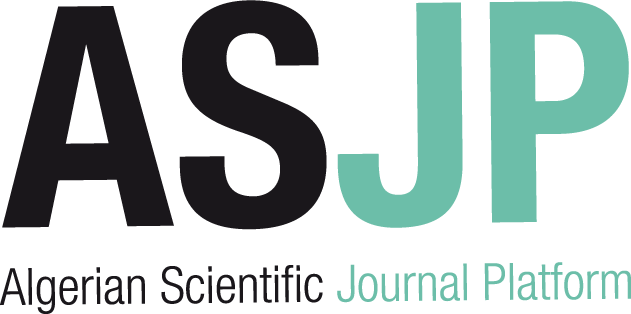| Titre : |
Doubly fed induction machine : modeling and control for wind energy generation |
| Type de document : |
texte imprimé |
| Auteurs : |
Gonzalo Abad, Auteur ; Jesús López, Auteur ; Miguel Rodriguez, Auteur ; Luis Marroyo, Auteur |
| Editeur : |
Piscataway, NJ : IEEE Press |
| Année de publication : |
2011 |
| Autre Editeur : |
New York : John Wiley & Sons |
| Collection : |
IEEE press series on power engineering num. 32 |
| Importance : |
XIV,625 p. |
| Présentation : |
ill. |
| Format : |
24 cm. |
| ISBN/ISSN/EAN : |
978-1-118-10496-5 |
| Note générale : |
Bibliogr. at the end of chapters. - Index |
| Langues : |
Anglais (eng) |
| Mots-clés : |
Induction generators -- Mathematical models
Induction generators -- Automatic control
Wind turbines -- Equipment and supplies
Éoliennes |
| Index. décimale : |
621.311.245 Industrie éolienne. Exploitation du vent |
| Résumé : |
This book will be focused on the modeling and control of the DFIM based wind turbines. In the first part of the book, the mathematical description of different basic dynamic models of the DFIM will be carried out. It will be accompanied by a detailed steady-state analysis of the machine. After that, a more sophisticated model of the machine that considers grid disturbances, such as voltage dips and unbalances will be also studied. The second part of the book surveys the most relevant control strategies used for the DFIM when it operates at the wind energy generation application. The control techniques studied, range from standard solutions used by wind turbine manufacturers, to the last developments oriented to improve the behavior of high power wind turbines, as well as control and hardware based solutions to address different faulty scenarios of the grid. In addition, the standalone DFIM generation system will be also analyzed. |
| Note de contenu : |
Summary :
1. Introduction to a wind energy generation system.
2. Back‐to‐back power electronic converter.
3. Steady state of the doubly fed induction machine.
4. Dynamic modeling of the doubly fed induction machine.
5. Testing the DFIM.
6. Analysis of the DFIM under voltage dips.
7. Vector control strategies for grid‐connected DFIM wind turbines.
8. Direct control of the doubly fed induction machine.
9. Hardware solutions for LVRT.
10. Complementary control issues: estimator structures and start‐up of grid‐connected DFIM.
11. Stand‐alone DFIM based generation systems.
12. New trends on wind energy generation. |
Doubly fed induction machine : modeling and control for wind energy generation [texte imprimé] / Gonzalo Abad, Auteur ; Jesús López, Auteur ; Miguel Rodriguez, Auteur ; Luis Marroyo, Auteur . - Piscataway, NJ : IEEE Press : New York : John Wiley & Sons, 2011 . - XIV,625 p. : ill. ; 24 cm.. - ( IEEE press series on power engineering; 32) . ISBN : 978-1-118-10496-5 Bibliogr. at the end of chapters. - Index Langues : Anglais ( eng)
| Mots-clés : |
Induction generators -- Mathematical models
Induction generators -- Automatic control
Wind turbines -- Equipment and supplies
Éoliennes |
| Index. décimale : |
621.311.245 Industrie éolienne. Exploitation du vent |
| Résumé : |
This book will be focused on the modeling and control of the DFIM based wind turbines. In the first part of the book, the mathematical description of different basic dynamic models of the DFIM will be carried out. It will be accompanied by a detailed steady-state analysis of the machine. After that, a more sophisticated model of the machine that considers grid disturbances, such as voltage dips and unbalances will be also studied. The second part of the book surveys the most relevant control strategies used for the DFIM when it operates at the wind energy generation application. The control techniques studied, range from standard solutions used by wind turbine manufacturers, to the last developments oriented to improve the behavior of high power wind turbines, as well as control and hardware based solutions to address different faulty scenarios of the grid. In addition, the standalone DFIM generation system will be also analyzed. |
| Note de contenu : |
Summary :
1. Introduction to a wind energy generation system.
2. Back‐to‐back power electronic converter.
3. Steady state of the doubly fed induction machine.
4. Dynamic modeling of the doubly fed induction machine.
5. Testing the DFIM.
6. Analysis of the DFIM under voltage dips.
7. Vector control strategies for grid‐connected DFIM wind turbines.
8. Direct control of the doubly fed induction machine.
9. Hardware solutions for LVRT.
10. Complementary control issues: estimator structures and start‐up of grid‐connected DFIM.
11. Stand‐alone DFIM based generation systems.
12. New trends on wind energy generation. |
|  |










